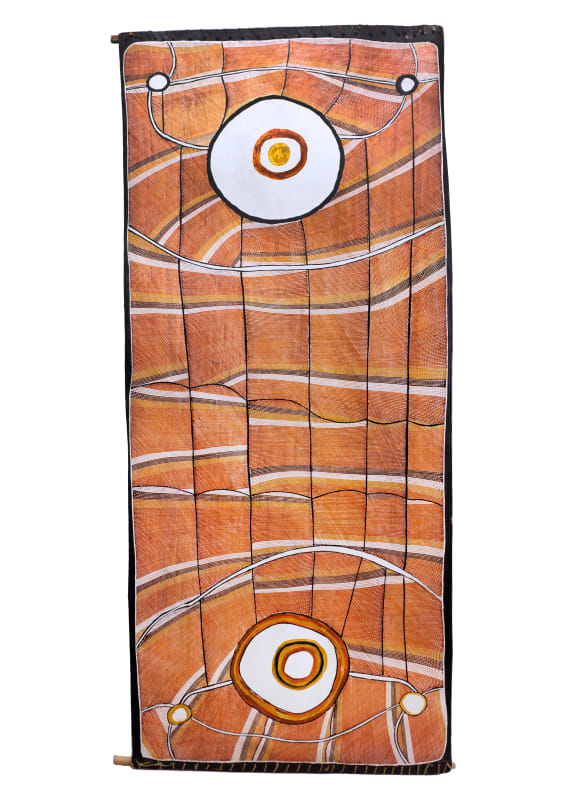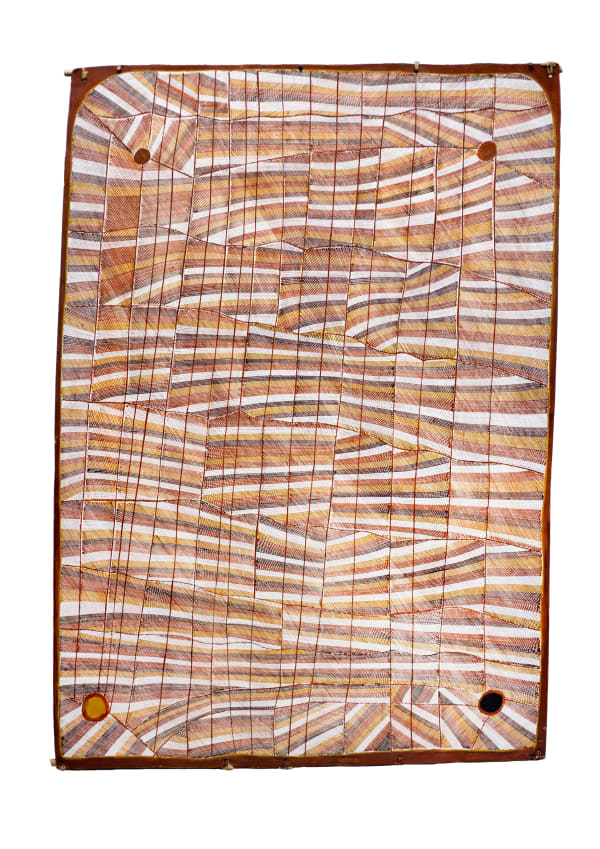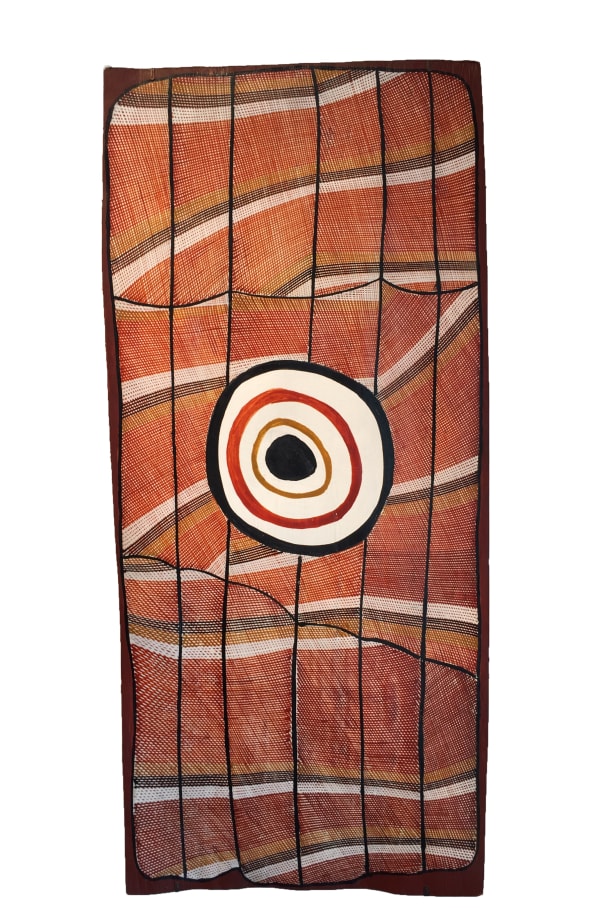John Mawurndjul
John Mawurndjul (b. 1952) was born 50km south of Maningrida, in the heart of Arnhemland. He was a member of the Kurulk clan and grew up with only sporadic contact with non-Aboriginal people, living according to the rhythms of nature.
Mawurndjul was an heir to the long painting tradition of the Kunwinjku artists, exemplified in barks by Yirawala, Peter Marralwanga and Mick Kubarkku. Mawurndjul painted collaboratively with his older brother, Jimmy Nijimjuma, until the late 1970s. At this early stage in his painting career, the primary subject matter for his work was the mythology of the surrounding environment at Memalingkan. The Ngalyod (the Rainbow Serpent) appears a recurring motif in Mawurndjul’s work, alongside other spirit beings including Namarrkon (The Lightning Spirit) and various depictions of local species, such as fish, bandicoots and possum.
During the early-mid 1980s, Mawurndjul began producing larger, more elaborate multi- figural bark paintings. This increase in scale was an unprecedented shift in contemporary Aboriginal bark painting. Over the course of his painting career, Mawurndjul has become renowned as a master of the ancient practice of ‘rarrk’: Fine cross hatching dominating the entire surface of the picturing plane, encrypted with sacred knowledge. While speaking to the aesthetic minimalism of the early Papunya painters, Mawurndjul set himself apart from contemporaneous masters of bark painting in allowing the rarrk to dominate-filling both the interior and surrounding space of his figures.
In time, figurative iconography was abandoned completely: Mawurndjul’s favoring a metaphorical and symbolic representation of land and its ancestral history - etched across the surface through oscillating and unpredictable hatching - signaled a Renaissance in contemporary bark painting. Many of Mawurndjul’s more abstract works are associated with the Mardayin ceremony, a now rarely performed sacred ceremony with clan identity and mortuary themes.
Having captured the attention of critics as early as 1988, John Mawurndjul has already earned himself an enduring place as one of Aboriginal Australia’s greatest bark painters. He won the Telstra National Aboriginal & Torres Strait Islander Art Award for painting on bark in 1999 and in 2002; was awarded the prestigious Clemenger Contemporary Art Award, at the National Gallery of Victoria in 2003. 2018 was an important year for John Mawarndjul's reputation and standing and, concurrently, the value and collectability of his works. Sydney's Museum of Contemporary Art held a major retrospective, which began its tour nationally. He looks likely to produce wonderful works of art and participate in important projects for many years into the future. He is, without doubt, one of the most successful Australian artists of the millennium.




